Part 1: The Loveliness
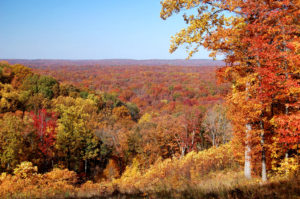
Our beautiful cousins, thus were trees described by the late Carl Sagan in Episode 4 (Heaven and Hell) of his highly praised television series Cosmos. Few would argue with his claim that trees are beautiful. Many others might take issue with his assertion that they are our cousins. There is bountiful evidence that he was correct on both counts.
My first awareness of trees as individuals representing an alien clan, another form of life, came as a child. In our backyard was an apple tree. Its’ low, sprawling limbs were an unspoken but clear invitation to climb. I found that one cannot climb into a tree without becoming aware of bark and texture, leaf and bud, a yielding to the touch. The sensual contact between their skin and ours demands consideration of how we are alike and yet, so different. Gaining age, experience, and strength I proceeded to climb into the maple trees that grew around our homestead. I was thrilled by the new perspective upon the world gained by leaving the ground. To be sure there was also a certain element of risk. To vacate terra firma is to flirt with the ramifications of gravity. But, even as a child, I had the intuitive sense that a world devoid of risks was an exceedingly uninteresting world indeed. One cannot sit high in a tree and remain unaware of being enfolded within a living entity as it surrounds, supports, and shares communion with us.
Growing up in rural Indiana I was surrounded by trees. Granted, the landscape also contained substantial expanses of corn, soy bean, and hay fields. But there were enough patches of woodland left to make the deciduous forest a significant component of my aboriginal world. Though but a child, there were trees enough for me to understand that they were the source of much of my world’s beauty. Now, sixty years later, it is much more difficult to find an unbroken piece of deciduous forest around my home. Here in Sullivan County, all the primal forests have been clear-cut at least once for their timber or pulp. Much forest here has been replaced by farmland. Still more of the forest in this part of southwestern Indiana has been erased from existence by strip-mining. Some of the older mined land, reclaimed with tree plantings, does at least bear a resemblance to the original deciduous forest. But lately the reclamation process causes one to believe they are amongst the rolling grasslands of Kansas rather than the mixed farmlands and woods of the Hoosier state.
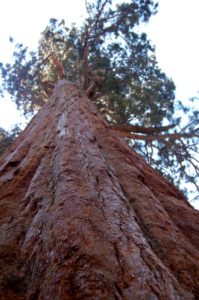 Eighty-seven percent of Indiana’s twenty-three million acres was once covered by forest. Today, that figure is about twenty percent. According to the Indiana Dept. of Forestry, there are less than two thousand acres of old growth (> 150 years old) remaining in the state. Less than half of this consists of forests uninfluenced by humans, what we call virgin timber. These remaining old growth plots of forest remind us of what has been lost. Some trees in the recently protected Meltzer Woods in Shelby County and the Wesselman Woods Nature Preserve in Vanderburgh County are thought to be four hundred years old. I find that expanse of time difficult to grasp. Such trees were standing impressively large when the Revolutionary War with Great Britain was fought. The great lifespan of many trees is, I suppose, one of the attributes that draws me to them in near worshipful admiration. Our human existence, measured in decades, seems mighty puny compared to that of a tree such as a bristlecone pine that was laying down wood six centuries before Tutankhamun ascended the throne of ancient Egypt.
Eighty-seven percent of Indiana’s twenty-three million acres was once covered by forest. Today, that figure is about twenty percent. According to the Indiana Dept. of Forestry, there are less than two thousand acres of old growth (> 150 years old) remaining in the state. Less than half of this consists of forests uninfluenced by humans, what we call virgin timber. These remaining old growth plots of forest remind us of what has been lost. Some trees in the recently protected Meltzer Woods in Shelby County and the Wesselman Woods Nature Preserve in Vanderburgh County are thought to be four hundred years old. I find that expanse of time difficult to grasp. Such trees were standing impressively large when the Revolutionary War with Great Britain was fought. The great lifespan of many trees is, I suppose, one of the attributes that draws me to them in near worshipful admiration. Our human existence, measured in decades, seems mighty puny compared to that of a tree such as a bristlecone pine that was laying down wood six centuries before Tutankhamun ascended the throne of ancient Egypt.
But all is not lost. We still have substantial areas of forest in the eastern United States (and the west of course). We have done some recovering since the days around the turn of the 20th century when eastern forests were being cleared at the rate of thirteen and a half square miles per day. In fact, according to a report from The Forest History Society, over two-thirds of our nation’s area which was forested in 1600 is still covered by woodlands of various types today. Of course, due to a history of clearing for farming, use for fuel and charcoal, and timber production, these forests differ substantially from what they were in the 17th Century. Although I still see trees, I am often reminded of Aldo Leopold’s observation that, “One of the penalties of an ecological education is that one lives alone in a world of wounds.”
To sense what the virgin forests of Indiana must have been like, one must search out the few remaining tracts. My own familiarity with such an undisturbed, old growth forest comes from visits to Donaldson Woods 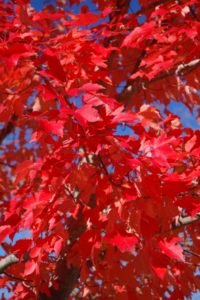 Nature Preserve located in Spring Mill State Park in Lawrence County, Indiana. The few pieces of old forest that remain in Indiana persist thanks to individuals who simply couldn’t bear to see these beautiful woodlands destroyed. Whether their reasons were allied to a sense of historical preservation, sentimentality, or even spirituality I do not know. I do know that I owe them a great debt of gratitude for making it possible for me to experience a primordial piece of our natural world. For this particular 67 acres of woodland we owe thanks to the unconventionality of George Donaldson who immigrated to Indiana from Scotland just after the civil war. In a time when the conformist wisdom called for one to market one’s timber and establish a farm Donaldson resisted. As Scott Russell Sanders has noted in his book A Conservationist Manifesto, Donaldson, . . . made no use of the land at all, except to walk around and admire it. No wood cutting, no hunting, no extraction of limestone; these were his rules. Thanks to these guidelines I can now wander through a living museum of natural history, a vestigial portion of Indiana as it existed in pre-settlement times.
Nature Preserve located in Spring Mill State Park in Lawrence County, Indiana. The few pieces of old forest that remain in Indiana persist thanks to individuals who simply couldn’t bear to see these beautiful woodlands destroyed. Whether their reasons were allied to a sense of historical preservation, sentimentality, or even spirituality I do not know. I do know that I owe them a great debt of gratitude for making it possible for me to experience a primordial piece of our natural world. For this particular 67 acres of woodland we owe thanks to the unconventionality of George Donaldson who immigrated to Indiana from Scotland just after the civil war. In a time when the conformist wisdom called for one to market one’s timber and establish a farm Donaldson resisted. As Scott Russell Sanders has noted in his book A Conservationist Manifesto, Donaldson, . . . made no use of the land at all, except to walk around and admire it. No wood cutting, no hunting, no extraction of limestone; these were his rules. Thanks to these guidelines I can now wander through a living museum of natural history, a vestigial portion of Indiana as it existed in pre-settlement times.
It is the size of the trees that, to me, makes Donaldson Woods so special. In the second growth forest around my home, I am lucky to find a tree greater than two feet or so in diameter. The virgin timber in Donaldson Woods includes yellow poplar and white oaks nearly six feet in diameter at breast height. There are American beech trees nearly three feet across. Shagbark hickory and sugar maple, sycamore and ash are here too; all standing with 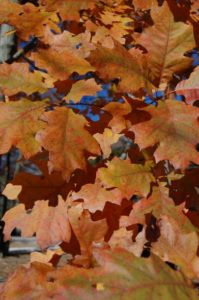 their most impressive bearing. Towering well over one hundred feet in height, they are mighty impressive representatives of their kind. While passing beneath these giants, I am reminded of Tolkien’s forests: Fangorn, Mirkwood, Lothlorien – old beyond guessing, massive of limb, immense of trunk, towering upward through the dappled sunlight, leafy canopies forming a living roof above the head. In spring the understory of this wondrous place is dappled with dogwood white and the rosy purple of redbuds. The forest floor is colored by the virginal white of bloodroot, the ornate purple of violets, the azure blue of Virginia bluebells, the gaudy yellow of dogtooth violets,. Of course this forest is a system not just a collection of trees and herbs. And so the scene is made even more vibrant by the chatter of gray squirrels, the repetitious bird-like chips of the chipmunk, the brash kuk-kuk-kuk-kuk of a pileated woodpecker, and the poignantly liquid soliloquy of a wood thrush.
their most impressive bearing. Towering well over one hundred feet in height, they are mighty impressive representatives of their kind. While passing beneath these giants, I am reminded of Tolkien’s forests: Fangorn, Mirkwood, Lothlorien – old beyond guessing, massive of limb, immense of trunk, towering upward through the dappled sunlight, leafy canopies forming a living roof above the head. In spring the understory of this wondrous place is dappled with dogwood white and the rosy purple of redbuds. The forest floor is colored by the virginal white of bloodroot, the ornate purple of violets, the azure blue of Virginia bluebells, the gaudy yellow of dogtooth violets,. Of course this forest is a system not just a collection of trees and herbs. And so the scene is made even more vibrant by the chatter of gray squirrels, the repetitious bird-like chips of the chipmunk, the brash kuk-kuk-kuk-kuk of a pileated woodpecker, and the poignantly liquid soliloquy of a wood thrush.
Being an ecosystem of ancient and rich texture, this old grow forest also carries out a host of activities not visible to the human eye. I was once clearly reminded of this when I took one of my biology classes on a visit to Donaldson Woods. Why, asked one of my students, don’t the trees form a pit beneath themselves as they use up more and more of the soil in which they grow? What a great question! Why not indeed? It seems logical, since trees are so firmly rooted in their place, to imagine them carrying more and more of the soil’s components up into their tissues. In fact, this very question was of great interest by at least the year 1648. It was at this time that the Belgian scientist Jan Baptista van Helmont undertook to discover whether or not trees were “eating” the soil so to speak in order to accomplish their growth.
This is how van Helmont conducted his experiment. Into a container  holding two hundred pounds of soil he placed a willow sapling. Over the next five years he watered the tree. At the end of this period of time, he removed the tree from the soil and weighed it. At the beginning of his experiment, the willow had weighed five pounds; now its weight was one hundred and sixty-nine pounds. van Helmont then weighed the soil in the container and found that it had lost only two ounces of weight. Since he had done nothing but water the plant, van Helmont concluded that the one hundred and sixty-four pounds of tissue formed by the tree had come only from the water he had supplied. Unknowingly, Jan van Helmont had germinated the beginnings of our understanding of photosynthesis; the process which makes it possible for most of the life on earth to exist.
holding two hundred pounds of soil he placed a willow sapling. Over the next five years he watered the tree. At the end of this period of time, he removed the tree from the soil and weighed it. At the beginning of his experiment, the willow had weighed five pounds; now its weight was one hundred and sixty-nine pounds. van Helmont then weighed the soil in the container and found that it had lost only two ounces of weight. Since he had done nothing but water the plant, van Helmont concluded that the one hundred and sixty-four pounds of tissue formed by the tree had come only from the water he had supplied. Unknowingly, Jan van Helmont had germinated the beginnings of our understanding of photosynthesis; the process which makes it possible for most of the life on earth to exist.
Biologists now know that it is not from water alone that green plants build their tissues of root, stem, and leaf. A succession of experiments over the next century or so eventually elucidated the process of photosynthesis. It has been found that much of the water taken up by plants is transpired from their leaves. Each molecule of water leaving the stoma of a leaf exerts a forceful tug upon the train of water molecules extending back down the tree to the roots. This is part of the mechanism which pulls water molecules upward in a plant in the absence of a pump (heart).
Scientists also eventually understood that the gas carbon dioxide was of extreme importance in the photosynthetic process. Additionally, the necessity of sunlight for the occurrence of photosynthesis was revealed. One might summarize this incredibly complex series of biochemical reactions thusly. Green plants (the green pigment chlorophyll is necessary too) take up water from the soil via their roots and take carbon dioxide from the air through pores in their leaves. In the presence of sunlight (a source of energy to drive the process) plants rip apart some of the water and the carbon dioxide molecules. They now have a supply of carbon, hydrogen, and oxygen atoms; basic elements for building organic compounds. We might compare this to tearing down an old barn and reusing the weathered boards and timbers to construct a recreational cabin.
By rearranging these elements and adding a sprinkle of ingredients from the soil, such as nitrates, plants are able to build sugars, starches, oils, and proteins. These compounds are then used to construct the tissues from which stems, leaves, roots, and flowers are made. Oxygen gas is given off as a byproduct of photosynthesis and is used by animals as a respiratory fuel. They in turn exhale carbon dioxide which can be taken up by plants for use in photosynthesis. A miraculous balancing act this is and one which, along with photosynthesis’s mirror image process cell respiration, keeps most of the living world chugging along. And this, prized student, is why the trees in Donaldson Woods do not “eat” the soil beneath their feet.
6H2O + 6CO2 —–———–> C6H12O6 + 6O2
Thus would I submit that trees are not only beautiful in form with their noble trunks, their robust branches, their luxuriant leaves of emerald, olive, and jade; they are also of inordinate exquisiteness in function. Not eaters of the soil but eaters of the sun they are. Each leaf is a tiny solar array capable of capturing light energy and transforming it into energy of chemical form. Having made this energy transformation, the tree is now able to perform a biochemical sleight of hand of staggering complexity. By building the aforementioned organic compounds, proteins and such, the tree is now able to make wood and meristem, cambium and bark, xylem and phloem, mesophyll and chloroplast.
A magnificent poplar or oak, standing tall and solid, is made essentially from carbon dioxide gas and water. Imagine if we could do that. Doubtless a skin of green might take some getting used to but we could subsist solely on a few hours of sunbathing or sitting beneath a grow-light each day. Adding the occasional glass of water, and perhaps a multivitamin we could convert light energy into food and tissue – automatic, effortless, wondrous. So it is with the trees, wondrous in both form and function.
Part 2: The Relationship
But recall that Carl Sagan referred to trees not just as beings of great beauty. He also denoted them as our cousins. Is this possible? A cousin is often defined loosely as a thing related to another. We might think of the ukulele and the guitar as cousins for example. But, in the case of the trees, Sagan meant something more akin to our notion of a cousin as a member of our extended family; an actual relative by descent. Should we, could we think of trees in this way? There is plentiful biological evidence to suggest that Sagan was without question correct.
When humans first began to categorize the relationships of organisms, in what we might think of as an observational, scientific manner, the criteria for classification were broad. Animals might, for example, be classified as blooded or bloodless, or as creatures of the air, land, or water. As science progressed, it didn’t take long for astute observers to notice that lumping organisms such as fish, whales, and ducks into a group because they inhabited water was a highly inaccurate measure of their real relationships. Enlightened taxonomists such as Linnaeus, Owen, and Cuvier turned to similarities and differences in anatomical structure as the keystone to understanding taxonomic relationships among organisms. For example, looking at forelimb structure (humerus, ulna, radius, carpals, metacarpals, phalanges) allowed the insight that mammals such as humans and whales are actually more closely related than whales and fish.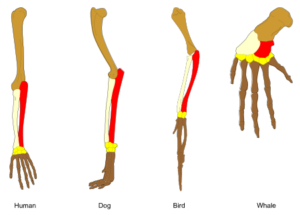
The same insight into our relationship with trees, and other plants, can be reasoned. At the cellular level, cells being the basic structural unit of living things, we find that plants and humans both possess a plasma membrane, nucleus, mitochondria, endoplasmic reticulum, and ribosomes as well as certain other structures.
We can go even farther. It is known that these structures arise because organisms have the instructions for building cells and their organelles encoded in their DNA. Cells build tissues, tissues comprise organs, organs create organ systems, organ systems function to form and sustain an organism. DNA is passed from ancestors to descendants. Back through the 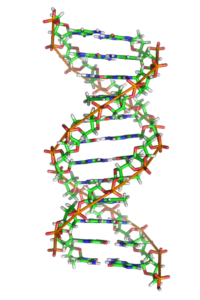 generations our DNA exists as an immortal thread connecting us with our deepest ancestry, linking us with the very origins of life on our planet. DNA analysis has become a powerful tool in fighting crime, proving paternity, and demonstrating our ancestry. The same biotechnological logic provides potent evidence of our relationship with the trees.
generations our DNA exists as an immortal thread connecting us with our deepest ancestry, linking us with the very origins of life on our planet. DNA analysis has become a powerful tool in fighting crime, proving paternity, and demonstrating our ancestry. The same biotechnological logic provides potent evidence of our relationship with the trees.
Beneath the skin, beneath the bark, written in the coded A’s, T’s, G’s, and C’s of our nucleotides lies the irrefutable proof of our kinship with oak and maple, redwood and sequoia. When comparing a snippet of the DNA sequence in a gene from a human – tct cca ccc tca ttt gat gac cgc aga – with that from an oak – tcc aca acc ctt tct gta ttc att cct – one is struck not by the strangeness of their differences but by the familiarity of their likenesses. A similar unity can be seen when we compare the DNA of any two organisms we might choose. The genetic code, which continues to surprise us with its complexity and dynamism, bears convincing evidence of the unity of all life. After all, organisms receive this wondrous code from their ancestors.
And so my friends, I hope you are fortunate enough to one day find yourself standing in the cathedral that we call Donaldson Woods, the basilica of Muir Woods, or the sanctuary known as Sequoia National Park. I hope you are able to someday find yourself sniffing a hint of vanilla within a stand of ponderosa pine in our American west. I wish you are granted the opportunity to paddle your canoe through a virgin cypress swamp whose trees were young when the first Europeans sailed the Atlantic. If you are granted these boons, perhaps you too will find yourself immersed in a sense of enraptured delight as you marvel at the beauty of our cousins the trees.
Photo Credits: van Helmont statue - Henxter at WikimediaCommons limb homology - Wikipedia.com DNA molecule - Richard Wheeler at WikimediaCommons All other photos by the author.
.
